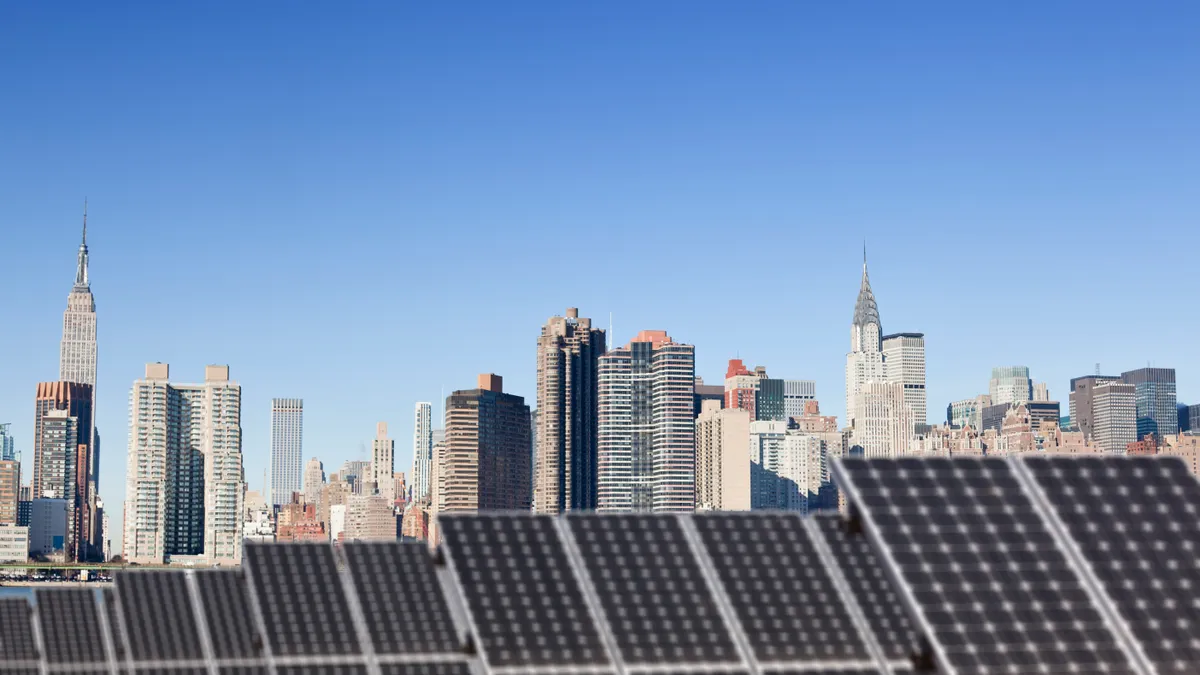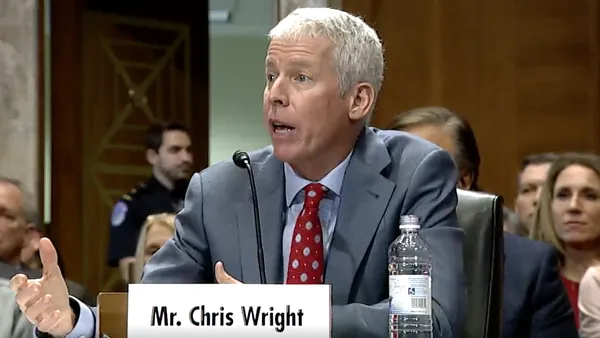Dive Brief:
- New York on Thursday became the first state to offer home energy rebates funded through the Inflation Reduction Act, making almost $40 million available to low income households for insulation and air sealing, heat pumps for space and water heating, and the electrical upgrades necessary to enable those retrofits.
- The state is eligible to receive about $159 million through the U.S. Department of Energy’s Home Efficiency Rebates program and $158 million through its Home Electrification and Appliance Rebates, or HEAR, program. Yesterday’s announcement marked the first tranche of HEAR funding for New York, delivered after its partial-scope application was approved in April.
- So far, 17 states have submitted applications for $8.8 billion available through the programs. “We're very, very close” to announcing additional awards, a senior DOE official told reporters on Wednesday. New Mexico, California and Hawai’i submitted applications several months ago and are likely next in line for approval, they said.
Dive Insight:
DOE expects the rebate programs, funded through the Inflation Reduction Act, to save consumers up to $1 billion annually in energy costs, reducing stress on the electric grid and supporting an estimated 50,000 jobs in residential construction, manufacturing and other sectors.
New York is “leading the charge as states across the country gear up to launch their Home Energy Rebates program — delivering jobs, savings, and healthier homes,” Secretary of Energy Jennifer Granholm said in a statement.
The funding will expand the reach of New York State Energy Research and Development Authority’s low-income EmPower+ program. Officials say the funds should serve thousands households over a period of years.
NYSERDA said it is working to develop and submit its full HEAR application “to enable rebate offers to moderate-income residents, up to 150 percent of area median income, and to owners of larger low- and moderate-income multifamily buildings.”
Sen. Charles Schumer, D-N.Y., called the HEAR program “the secret sauce” of the Inflation Reduction Act. “It saves consumers money on energy costs while reducing the polluting greenhouse gasses driving global warming.”
Sierra Club Executive Director Ben Jealous said New York’s Empower+ expansion will “benefit individual homes, but also play a big role in ensuring the grid is more reliable during times of high energy demand. These benefits will also create jobs and put positive pressure on the market for energy efficient appliances.”
There is an Aug. 16 deadline for states to indicate whether they intend to apply for the rebate funds, and applications are due Jan. 31, 2025. No state has indicated they do not intend to apply, a senior DOE official said. If a state does not apply, its funding will be reallocated to other states, according to program guidance.
The U.S. Environmental Protection Agency yesterday launched a pair of initiatives that can make accessing the funds easier.
A new zip code-based home improvement savings web tool will help individuals identify the energy efficiency incentives available in their area, including rebates funded by the IRA. EPA also rolled out a new service provider program to help consumers tackle six home efficiency upgrades. These include: heating and cooling; efficient water heaters; smart thermostats; attic sealing and insulation; high-performing windows and storm doors; and ensuring the home is electric ready.
EPA tapped six companies and community-based organizations offering a “concierge” approach to help customers navigate sales, installation, incentives and financing. Charter program partners are: Sears Home Improvement; Air Service Professionals; Pearl Certification; Philadelphia Energy Authority; QuitCarbon; and Sealed Inc.
“These new resources are key to making progress in fighting the climate crisis and will help make energy efficient options more affordable and accessible, particularly for millions of low-income and disadvantaged households across the nation,” said EPA Administrator Michael Regan.














